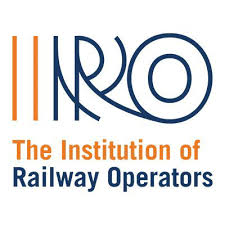With The Passenger Railway Services (Public Ownership) Bill presented in Parliament on Thursday 18th July as the first step towards the renationalisation of passenger operations on GB’s railways, in this Insight Chris Hoskin provides some pointers on where the change could make a difference.
The manifesto promise by Labour to renationalise the railways is based around cost saving and ploughing profits (where they exist) back into the industry. These are both admirable aspirations but making it work is another matter.
Centralisation: Clearly there is duplication on the railways as each Operator has some functions that may be better served from a single source. However, this process must not repeat the mistakes of Network Rail’s centralisation which resulted in such a loss of local knowledge, and records, when the Centre was opened in Milton Keynes. Any radical change process must first sit back and consider what is worth centralising, and what is best left local.
Carving up the pie: Will operations remain grouped according to their privatisation groupings? That would surely not provide any benefits. One solution would be to mirror the Regions of Network Rail which has turned the original Big Four into the Big Six (with devolved Scotland and Wales). History, however, is not kind to this solution. The rose-tinted 1930s art-deco world of the Big Four competing for holiday traffic in the days of endless summer sun are well gone (just look out of the window for a start). The Big Four’s existence, which lasted an even shorter time than privatisation, under the surface might not have been quite so glorious as the posters make us believe. The other, and probably more attractive, option is sectorisation. Sectorisation was actually British Rail’s finest hour. From an operating perspective it makes a lot of sense to centralise based on the function of the operation.
What it could look like: A sectorised railway could easily return to the three main groups of InterCity (Anglia main lines, Avanti, CrossCountry, EMR mainlines, GWR mainlines including the Night Riveria, LNER, and TransPennine Express), Regional Railways (Anglia regional, EMR regional, GWR SW regional, LNWR, Northern), and Network SouthEast (c2c, Chiltern, GTR, GWR Thames Valleys, South Eastern, South Western), and then the rest would be part of devolved and local powers (ScotRail, Caledonian Sleeper, TfW, TfL and Overground, Merseyrail, and WMR). The only real change from the BR sectorisation is WMR devolving to WMCA and TransPennine which has been made part of InterCity here rather than Regional Railways to give it a better focus.
Rolling stock simplification: A major piece of the operations puzzle is rolling stock. The rolling stock decision making on GB railways needs a reset. There are wildly different train types being procured for very similar duties by separate teams in separate locations. At its best, this has allowed trains specific to a duty to be procured such as EMR using all the learning of the previous Cl.80x builds to procure a suitable train. At its worst, it has created a smorgasbord of rolling stock, such as the triple fleet procurement of TransPennine Express, and has created incompatibility where there should be none. Perhaps the most ludicrous of this is the coupling incompatibility between Cl.80x fleets: Classes 800, 801, 802, and 803 are in one category, then the signal pins in the coupling were changed so Cl.805, 807, and 810 are in a separate category. This means that a diverted LNER IEP on the WCML cannot complete a full functionality coupling with an Avanti Cl.805/7. Repetition of this sort of situation needs preventing.
Rolling stock procurement: Currently, Northern is deep into the process of procuring new train fleets based on a common design, with the aim to bring standardisation across the operation. It has also been announced that GWR wish to procure regional train fleets in their Project Churchward. I am sure that if Churchward was around, he may go as far as agreeing that, given the circumstances, the GWR should just procure rolling stock in collaboration with the Greslians up north, since they are both procuring a regional fleet (even if that does mean a move away from diesel-hydraulics).
The long term rolling stock plan: The other benefit of sectorisation based on operation is the ability to develop a proper long term rolling stock plan. This would not only benefit manufacturers to have some idea when a procurement was likely to take place, and remove the feast and famine cycle, but also enable financiers to understand how their fleet is likely to be used over its life. A possible example where this could happen is where GWR are having to use West of England Cl.802s on Devon and Cornwall services to release the Castle HSTs for scrap. In the Fantasy Railways league, Regional Railways uses the first of their new (Greslian) fleets to release Cl.15x units to head to the South West as a temporary measure to release the West of England Cl.802s. The Cl.15x fleet will then remain there until sufficient of the new Regional Railways fleet allows them to be disposed of. The Cl.802s are given back to InterCity, where they are sent north to join LNER’s fleet and LNER’s new CL.897s join their siblings at TransPennine Express. It’s not perfect, and may result in orders to lengthen Cl.802s, but it prevents two more “novel” fleets (TransPennine and GWR procurements).
What this quick canter through the “what-if” generator shows is that no solution is easy, but the railway industry is going to have to work at pace if joe-public is not to become even more unenamoured with the railways at the lack of change. However, it is certainly an exciting time, and one that hopefully will take the best aspects from all of railway history – Pre-grouping, the Big Four, Nationalisation, Sectorisation, and Privatisation – and blend them together into a smoothly operating system.









